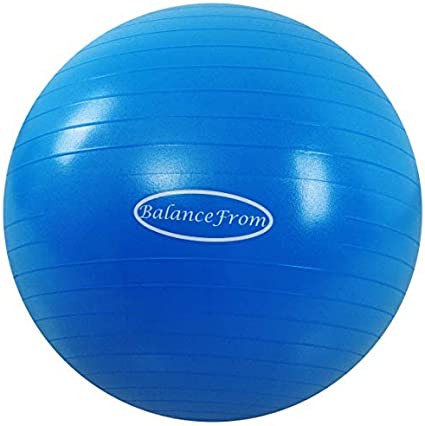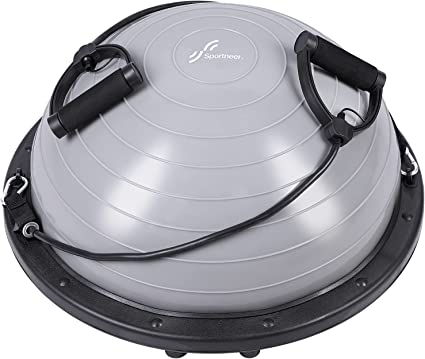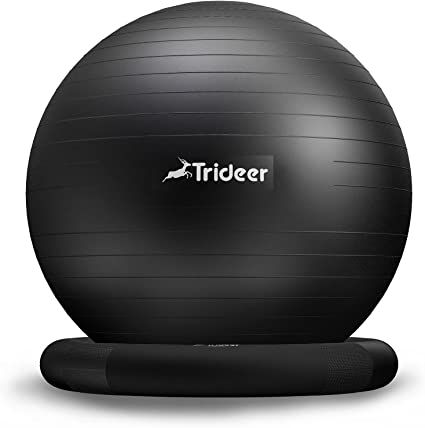Introduction
Exercises that improve balance are a crucial part of any fitness regimen. They entail various postures and activities that test your stability and enhance your overall balance. Include balancing exercises in your workouts to reap the rewards, whether you’re an athlete hoping to improve performance or an elderly person trying to avoid falls. In this post, we’ll look at the value of balancing exercises, talk about the different kinds of exercises, and offer a list of useful exercises to help you get started on your balance journey.
Benefits
Exercises for balance have several advantages beyond just increased stability. By performing these exercises on a regular basis, you can:
Greater stability
For daily activities like walking, climbing stairs, or standing for lengthy periods of time, maintaining good balance is essential. You may better control how your body moves by engaging the muscles and sensory systems involved in stability through balance exercises. Your general coordination can be improved and your chance of falling decreased with this increased stability.
Injury Avoidance
You are less prone to suffer injuries if your body is balanced and stable. Exercises for balance build the muscles in your lower body, particularly those in the ankles, knees, and hips, which are essential for maintaining equilibrium. You can defend yourself against sprains, strains, and other common ailments by strengthening these muscles.
Improved Posture
Numerous musculoskeletal conditions and discomfort can be brought on by poor posture. Exercises for balance help you keep a straight posture by encouraging optimal alignment and activating your core muscles. As a result, you might enjoy less back pain, better breathing, and more assurance in the alignment of your body.

Bosu Home Gym Equipment The Original Balance Trainer 26 Inch Diameter
Types
You can add a variety of balance exercises into your training program. Let’s look into each of these categories:
Standing Balance Training
Exercises to improve standing balance are simple and portable. They entail keeping your balance while standing on one leg or testing your equilibrium by switching your base of support. The heel-to-toe walk and one-legged balancing are two examples.
Dynamic exercises for balance
Exercises for dynamic balance entail moving while keeping your balance. These drills simulate situations where balance is necessary, such as when walking, jogging, or playing sports. They may involve actions like lateral leg swings, lunges, and step-ups.
Exercises Using a Stability Ball
Exercise balls or Swiss balls, sometimes known as stability balls, can be used to improve balance and stability. Your core muscles will be put to the test by these big inflatable balls, and you’ll need to use your stabilizing muscles to stay balanced. Ball squats, modified planks, and sitting balance drills are a few efficient stability ball exercises.
Pilates and yoga
Pilates and yoga are both great exercises for enhancing balance and body awareness. These practices include a variety of poses and motions that emphasize strength, flexibility, and stability. Your balance can be greatly improved by performing yoga poses like the tree pose, warrior pose, and standing knee raise, as well as Pilates single-leg stretch and spine twist exercises.
Tai Chi
Tai Chi is a traditional Chinese martial art that emphasizes deep breathing and slow, controlled motions. It places a focus on relaxation, balance, and coordination. Tai Chi is a useful exercise for enhancing balance and lowering the chance of falling because its slow and fluid movements encourage body awareness and stability.
Exercises for Proprioception
Proprioception, or the capacity to feel how your body is moving and positioned in space, can be challenged by proprioceptive activities. These exercises frequently use wobble boards, foam pads, or other unstable surfaces or apparatus. Proprioceptive exercises encourage your muscles and joints to adapt and enhance their capacity to maintain balance by providing controlled instability.

ProsourceFit Exercise Balance Pad
Exercises
After talking about the various balance exercises, let’s look at some particular exercises you can add to your routine:
One-Legged Balance
Lift one leg off the ground while standing on the other, then balance yourself for 30 seconds. Starting with holding onto a firm surface, you can progressively work your way up to executing the exercise by yourself.
Turn-to-Turn Walk
With each step, put one foot in front of the other, heel to toe. Take around 10 to 15 calm, deliberate steps forward while maintaining your balance. Your balance and coordination will be tested by this exercise.
Lateral leg lift
Put your feet hip-width apart and stand tall. Maintaining your equilibrium, extend one leg to the side while keeping it straight. Reverse the process on the other side by lowering the leg again. On each leg, perform 10 to 15 repetitions.
Squats with a bosu ball
Put the flat side of a Bosu ball down and stand with your feet shoulder-width apart. By bending your knees and lowering your body while maintaining a balanced and centered weight, you can perform squats. Set a goal of 10–15 repetitions.
Branch Pose
Put all of your weight on one leg as you stand tall. Avoid touching your knee and place the sole of your opposite foot on your inner thigh or calf. Obtain stability and raise your hands in the pose of prayer in front of your chest. For 30 to 60 seconds, maintain this position before switching sides.
Stance-based knee lift
Put your feet hip-width apart and stand tall. While keeping your balance, raise one knee toward your chest. After a brief pause, lower the leg back down. the other leg, and repeat. On each leg, perform 10 to 15 repetitions.
Pledge Pose
Put yourself in the push-up position with your weight on your toes and forearms. Maintain a straight posture and use your core muscles to stay stable. As your strength improves, gradually lengthen the time you hold the plank position for.
Exercises using a Wobble Board
Make sure the wobbling board or balance disc is solid and steady before standing on it. To stay balanced, shift your weight and make slow, deliberate motions. Your proprioception and stabilizing muscles will be tested during this exercise.

BalanceFrom Anti-Burst and Slip Resistant Exercise Ball Yoga Ball Fitness Ball Birthing Ball with Quick Pump, 2,000-Pound Capacity
Tips
For the best results when include balancing exercises in your regimen, keep in mind the following advice:
As your fitness level increases, start with activities that are basic for you, and as your balance gets better, move on to ones that are more difficult.
To ensure efficacy and avoid injuries, perform balance exercises with perfect form and technique. Maintaining good posture, using your core muscles, and evenly dispersing your weight are your key priorities.
Progressively advance by progressively upping the challenge or length of the workouts. This reduces the possibility of strain or overexertion while enabling your body to adapt and improve.
Regular balance exercises should be done, ideally two to three times per week as part of your training routine. To see results and benefit from better balance, consistency is essential.
To obtain general health and well-being, combine balance exercises with other forms of exercise, such as strength training and cardiovascular activities.
Pay attention to your body’s signals, and adjust or take breaks as necessary. While it’s necessary to push yourself, you shouldn’t sacrifice your security or comfort in the process.
Tracking your progress and setting goals will help you stay motivated. Honor the incremental victories you make along the journey and the progress you notice in your stability and balance.
Conclusion
Your overall health can be significantly improved by include balance exercises in your workout regimen. You can gain advantages including greater posture, improved stability, and injury prevention. There are many different balance exercises available, so there is something for everyone, whether you’re an athlete, an elderly person, or just someone trying to improve your balance. Keep in mind to begin with the fundamentals, advance gradually, and maintain consistency. You can reap the benefits of more stability and self-assurance in your body’s actions by incorporating balance exercises into your daily regimen.

Sportneer Balance Ball Trainer – Non Slip Half Yoga Exercise Ball with Resistance Bands & Pump for Stability, Core Training and Full-Body Workout – Home Fitness & Gym Strength Equipment
FAQs
How frequently should I perform balance training?
Incorporate balancing exercises into your program as often as possible, ideally two to three times each week. To see results and benefit from better balance, consistency is essential. However, pay attention to your body and modify the frequency in accordance with your degree of fitness and capacity for recuperation.
Can balancing training relieve back pain?
Yes, balance exercises can aid with back pain relief by enhancing body alignment, strengthening core muscles, and improving posture. For workouts that target back pain particularly, seek advice from a medical expert or a certified fitness professional.
Are balance exercises appropriate for people of all ages?
Yes, people of all ages can benefit from balance exercises. They may be adjusted to accommodate various capacities and levels of fitness. However, it’s advisable to speak with a healthcare provider before beginning a new fitness regimen if you have any pre-existing medical ailments or concerns.
Can balance training enhance athletic performance?
Athlete performance depends on stability, body control, and coordination, all of which can be improved by include balance exercises in your training program. Balance training can help athletes in a variety of sports, including basketball, tennis, and gymnastics.
How long does it take for balance training to show results?
Depending on personal characteristics including initial fitness level, consistency, and effort, the length of time it takes to notice effects from balance exercises can vary. However, you can begin to notice improvements in stability and balance within a few weeks to a few months with consistent practice and increasing difficulty.

